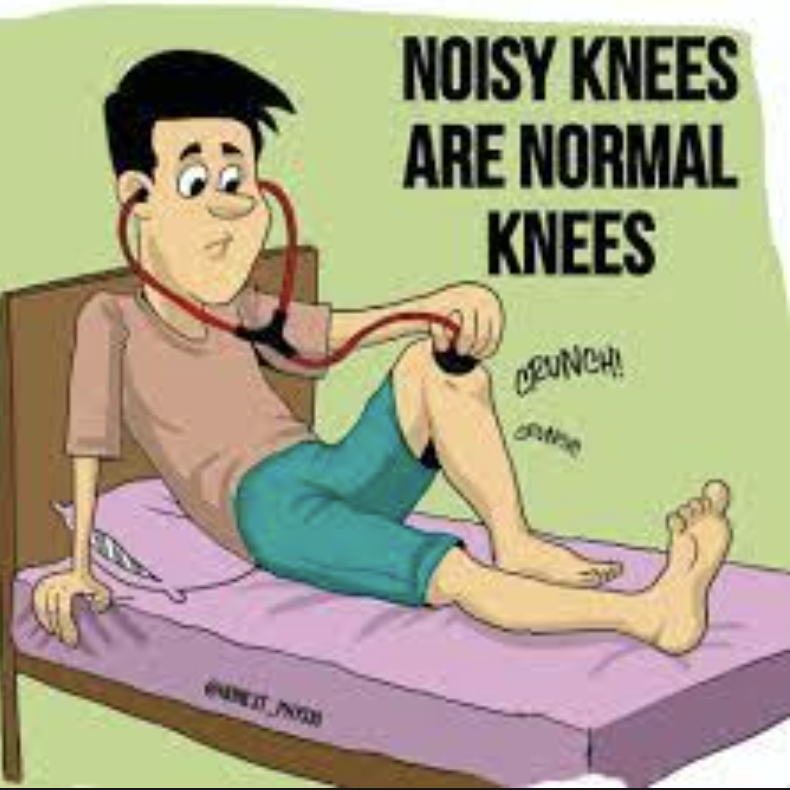Do your knees sometimes sound like a bowl of rice krispies—snap, crackle, pop? You’re not alone. Many people experience clicking and clacking noises in their knees, often accompanied by feelings of concern or discomfort. But what exactly causes these sounds, and should you be worried? Let’s dive into the fascinating world of knee noises to uncover the truth.

What causes clicking and clacking knees?
Clicking and clacking noises in the knees can stem from various factors, including:
- Gas Bubbles: Sometimes, the popping sound results from the release of gas bubbles within the synovial fluid that lubricates the knee joint. This phenomenon, known as cavitation, occurs when the joint’s pressure changes rapidly, such as during movement. Like the change in pressure when loosening the bottle top of a coke drink, the gases escape.
- Soft Tissue Rubbing: The knee joint comprises several structures, including cartilage, ligaments, and tendons. When these tissues glide over each other during movement, they may produce audible sounds, particularly if there’s an irregularity or roughness in the joint surfaces.
- Muscle Imbalances: Weakness or tightness in the muscles surrounding the knee, particularly the quadriceps, can alter the joint mechanics, leading to abnormal movement patterns and accompanying noises.

Is Knee Clicking and Clacking Important?
While knee noises can be disconcerting, they’re not necessarily indicative of a serious underlying issue. In many cases, occasional clicking or clacking is harmless and poses no threat to joint health. However, persistent or accompanied by pain, swelling, or instability, it may warrant further investigation. It can also be the initial piece of the knee history and important to voice to us as physiotherapists.

Addressing Knee Noises Through Quad Strength and Length
One effective approach to managing knee clicking and clacking involves addressing quadriceps strength and length. Here’s how:
- Strengthening Exercises: Incorporating targeted exercises to strengthen the quadriceps muscles can help stabilise the knee joint and improve its biomechanics. Focus on exercises like squats, lunges, and leg presses to build strength and stability.
- Stretching Routine: Tightness in the quadriceps can contribute to imbalances and altered joint mechanics, exacerbating knee noises. Implement a regular stretching routine to lengthen the quadriceps muscles and promote flexibility. Simple stretches like quad stretches and foam rolling can be beneficial.
- Balanced Training: Opt for a well-rounded exercise program that addresses both strength and flexibility across all muscle groups. Incorporating activities like yoga or Pilates can complement traditional strength training, promoting overall joint health and mobility.

While knee clicking and clacking may sound alarming, they’re often harmless and can be managed effectively through targeted interventions. By addressing quadriceps strength and length, you can enhance joint stability, improve biomechanics, and reduce the occurrence of noisy knees. Remember, if knee noises are accompanied by pain or other symptoms, consult with a physiotherapy professional for personalised guidance and treatment.
Embrace the journey towards healthier, happier knees, and let the symphony of clicks and clacks be a reminder of your body’s resilience and adaptability.
Thanks for reading
James @physiorun
